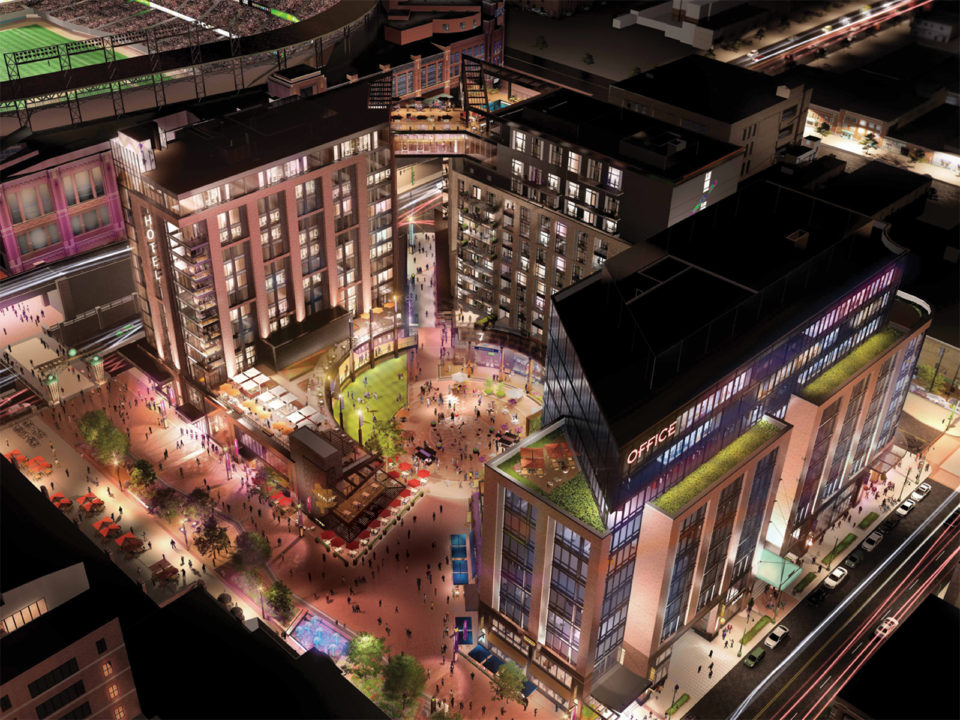The Local newsletter is your free, daily guide to life in Colorado. For locals, by locals. Sign up today!
Doing Your Part: Raise the Roof
The real estate atop our homes and garages seems like an awful waste of space—until you let Andy Creath green it up for you.
We rarely expend much mental bandwidth on the state of our roofs unless they recently took a beating in a hailstorm. But maybe we should. According to a 2014 study from Climate Central, an independent climate change research organization, Denver had the third-worst urban heat island effect of the 60 cities it studied. The urban heat island effect is a phenomenon in which pavement, concrete, and other heat-trapping materials lead to warmer temperatures in urban centers than in nearby rural areas. In Denver, that can mean up to a 23-degree difference between downtown and, say, the edges of the Eastern Plains. For sauna lovers, that might sound absolutely dreamy; however, urbanization combined with climate change could begin to cook our cities in ways that stress energy resources, imperil economies, and jeopardize human health—particularly in low-income areas and in communities of color, which are disproportionately affected by climate change.
Denverites can help nudge the thermometer down by greening their homes’ rooftops, which is where Green Roofs of Colorado comes in. Founded by former Environmental Protection Agency worker Andy Creath in 2007, Green Roofs of Colorado designs, installs, and maintains roofs on residential and commercial buildings across the state, including at the Denver Botanic Gardens and the Clyfford Still Museum. “An 800-square-foot residential green roof isn’t going to have the impact of a 25,000-square-foot commercial roof,” Creath says, “but if 20 houses do it, it certainly adds up.” Plus, Creath explains, green roofs—basic versions of which cost roughly $25 per square foot, not including potentially necessary structural changes—help with energy efficiency in the indoor areas below them, offer space to grow your own food, detain stormwater, clean the air, increase habitat and biodiversity, and, in a satisfying twist, actually protect your roof from hail damage. Below, Creath helps us detail some of the fundamentals of green roofing.

Flora
Creath selects plants for their hardiness, their ability to weather extreme heat and cold, and their capacity to thrive without much water. “Of course, plants being pretty is a big thing, too,” he says. “I want colorful flowers, plants with different heights, plants that bloom at different times, and grasses that move with the wind.” Creath likes South African ice plants because they spread easily as ground cover and have many varieties and colors of flowers. Yellow penstemons are a great low-water plant. Creath also uses blue grama grass, native to Colorado, for height and visual interest.
Layering
A green roof typically has a waterproof membrane, a root barrier, a drainage layer, filter fabric, and a band of growing media (aka specially designed soil) all layered “kinda like lasagna,” Creath says. The vegetation rests atop all of the layers. Creath generally works with a homeowner’s architect to make sure the roof can support the additional weight.
Structural Considerations
Not every house can accommodate a green roof without some changes to account for weight and/or sloped roofing. This hypothetical house has flat surfaces—as opposed to angled ones—perfect for planting. “A lot of people install green roofs when they’re already having to put on a new roof after a hailstorm,”Creath says. “And sometimes, because they often have gentler angles, it’s easier to put a green roof on your garage as opposed to your house.”
Doing Their Part: Green Buildings Ordinance
Denver’s 2017 Green Roof Ordinance was remade into the Green Buildings Ordinance in 2018. This is what that looks like now.
In 2017, after voters authorized the Green Roof Initiative, we all assumed we’d start seeing green oases remaking the Denver skyline. We were wrong. That’s because the folks who ran the initiative made a few miscalculations about the feasibility of building owners being able to install heavy green roofs. “Green roofs were not the perfect solution to everything,” says Green Roofs of Colorado’s Andy Creath, a technical adviser for the initiative. “We came up with a compromise.” That accord changed the Green Roof Ordinance into the Green Buildings Ordinance (GBO) in 2018.
By most accounts, the revamp made it easier for commercial structure owners to address climate change by offering compliance options beyond green roofs that increase energy efficiency and decrease the urban heat island effect. Buildings subject to the GBO* must install a cool roof—designed to reflect sunlight and absorb less heat—plus choose one other compliance option. By giving owners/builders a variety of options to choose from, says Denver Community Planning and Development’s Amanda Weston, “Projects are achieving the environmental benefits we hoped for with the initial Green Roofs Initiative.”
In fact, roughly 145 projects are underway or have been completed since the GBO went into effect. That means new and existing buildings around town are decreasing their environmental impacts with on-site renewable energy systems; by decreasing energy consumption; by buying off-site renewable energy; by paying into a green building fund; by obtaining green building certification; by enrolling in the GBO’s Energy Program; and, of course, with on-site green spaces, even if they’re not on the roof.
*The GBO generally applies to new buildings or additions 25,000 square feet or larger, and to existing buildings 25,000 square feet or larger that are replacing their roofs.








